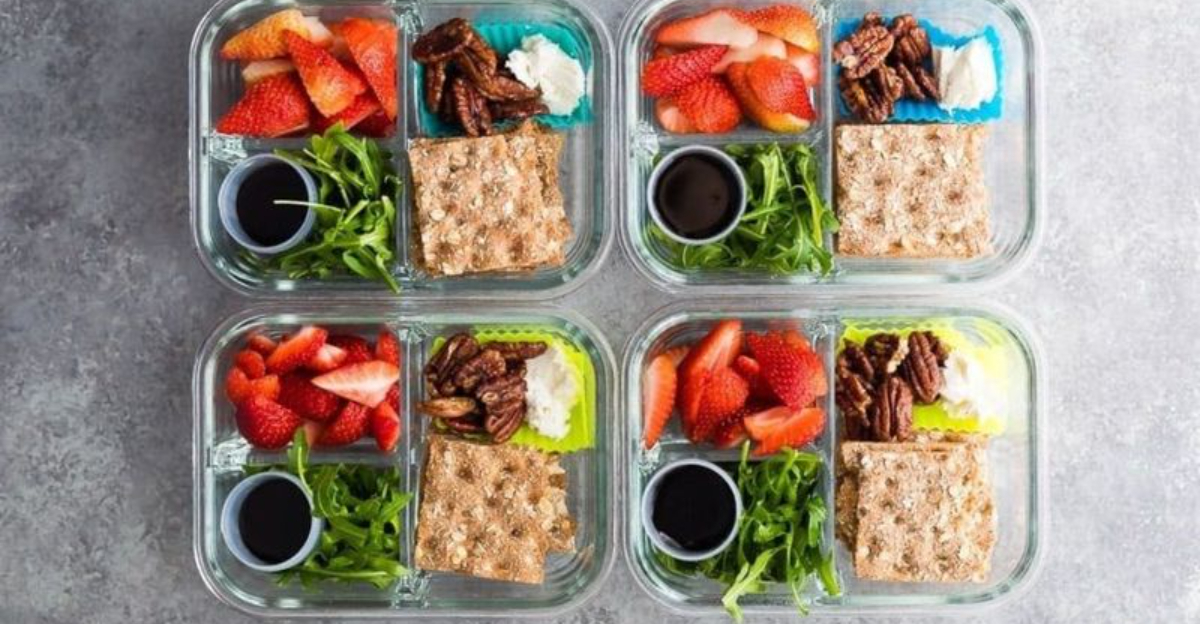California Schools Begin Moving Away From Ultraprocessed Foods

Change is on the lunch line. Trays trade neon wrappers for real color. In California, a new law pushes cafeterias toward fresh, whole ingredients and away from ultraprocessed shortcuts. The aim feels bigger than policy: kitchens cooking again, produce on display, seasons setting the rhythm.
Districts start with simple swaps, then rebuild routines around scratch prep and thoughtful sourcing.
Kids taste food that resembles what it came from. Teachers notice calmer afternoons. Families recognize flavors from home. If the shift holds, California can rewrite the playbook for school meals and nudge the rest of the country forward.
1. California Moves To Curb Ultraprocessed Foods In Schools
California recently passed legislation targeting ultraprocessed foods in school meals. The goal is simple: get healthier, less processed options onto students’ plates. Lawmakers recognized that many cafeteria staples contain excessive additives, preservatives, and artificial ingredients.
By limiting these items, schools could help students develop better eating habits early on. This initiative places California at the forefront of a national conversation about childhood nutrition and wellness.
2. What The Law Does And Who’s Responsible
The legislation directs the California Department of Public Health (CDPH) to develop guidelines restricting ultraprocessed foods. School districts will then need to follow these rules when planning menus and purchasing ingredients.
Responsibility falls on both state officials and local administrators. Nutrition directors, food service teams, and district leaders must work together to ensure compliance. Clear accountability measures help guarantee that changes actually happen in cafeterias statewide.
3. Key Timeline And Deadlines For Phaseout
Implementation won’t happen overnight. The law sets a phased timeline, giving districts several years to adjust their food programs gradually. Early deadlines focus on developing definitions and guidelines.
Later milestones involve actual menu changes and vendor contract renegotiations. This staggered approach allows schools time to adapt without overwhelming staff or disrupting meal service. Patience and planning are key to making lasting improvements in school nutrition.
4. How Ultraprocessed Will Be Defined
Defining ultraprocessed foods is tricky but essential. Experts often use classification systems that look at the degree of industrial processing and number of additives. Foods with long ingredient lists full of unrecognizable chemicals typically fall into this category.
Think brightly colored snacks, instant noodles, and certain frozen entrees. California’s guidelines will likely reference scientific frameworks to create clear, enforceable standards for school kitchens.
5. Foods Likely To Be Affected Vs. Exempt
Expect sugary cereals, flavored yogurts with artificial colors, and heavily processed meats to face restrictions. Items loaded with preservatives, emulsifiers, and flavor enhancers could be phased out.
Meanwhile, minimally processed staples like plain milk, cheese, whole grains, and fresh produce should remain untouched. The law targets the most concerning products while preserving nutritious basics. Balancing variety and health is the challenge ahead.
6. Implementation In School Kitchens
Shifting away from ultraprocessed foods means more scratch cooking. School kitchens may need to chop vegetables, marinate proteins, and bake bread instead of reheating pre-packaged items.
Procurement teams will also rethink vendor relationships, seeking suppliers who offer whole ingredients rather than frozen, ready-to-heat meals. This requires new skills, better equipment, and updated recipes.
7. Funding, Training, And Infrastructure Hurdles
Money is a major concern. Many districts lack the budget for upgraded ovens, refrigerators, or staff training programs. Without adequate funding, even the best intentions fall flat. Staff need workshops on knife skills, food safety, and recipe development.
Kitchens need modern appliances to handle increased prep work. State support and grants could bridge these gaps, helping schools invest in healthier futures for students across California.
8. Equity Considerations for Low-Income Districts
Low-income districts often face tighter budgets and fewer resources. Ensuring they can comply without sacrificing meal quality or access is critical. Equity means providing extra support where it’s needed most. Wealthier schools shouldn’t be the only ones offering fresh, wholesome food.
Targeted funding, technical assistance, and shared resources can level the playing field. Every student deserves nutritious meals, regardless of their school’s zip code or financial situation.
9. Reactions: Public Health Advocates, Industry, And District Leaders
Public health groups applaud the law, seeing it as a major win for children’s wellness. They argue that reducing ultraprocessed foods could lower obesity and chronic disease rates.
Food industry stakeholders express concerns about feasibility and costs. Some worry that strict rules might limit choices or increase prices. District leaders are cautiously optimistic, eager for healthier meals but mindful of logistical challenges ahead.
10. Early Adopters And Model Districts
Some California districts have already started reducing ultraprocessed foods on their own. These pioneers serve as valuable examples for others to follow. Model programs demonstrate that change is possible.
They share recipes, procurement strategies, and lessons learned with neighboring schools. Learning from early adopters can smooth the transition statewide. Their successes and challenges provide a roadmap for districts just beginning this journey toward healthier menus.
11. Expected Health and Academic Outcomes
Better nutrition could lead to improved focus, energy, and behavior in the classroom. Students who eat whole foods may experience fewer sugar crashes and more stable moods.
Long-term health benefits might include lower rates of obesity, diabetes, and heart disease. Establishing good eating habits early sets kids up for lifelong wellness. Academic performance could also climb when students feel better physically and mentally.
12. Interaction With Existing State And Federal Nutrition Rules
California must align its new law with existing federal standards, like those set by the USDA. Navigating overlapping regulations can be complex. Federal rules already limit sodium, fat, and sugar in school meals. California’s ultraprocessed food restrictions add another layer of requirements.
Coordination between state and federal agencies will be essential. Clear communication ensures schools understand all the rules and can comply without confusion or conflict.
13. What To Watch Next: Guidance, Vendor Shifts, And Enforcement
The coming months will bring detailed guidance documents from the state. Schools are eager for specifics on what’s allowed and what’s not. Vendors will adjust their offerings, reformulating products or introducing new lines to meet the standards.
Enforcement mechanisms will also take shape, determining how compliance is monitored. Staying informed and flexible will help districts navigate this evolving landscape successfully as California reshapes school food.






